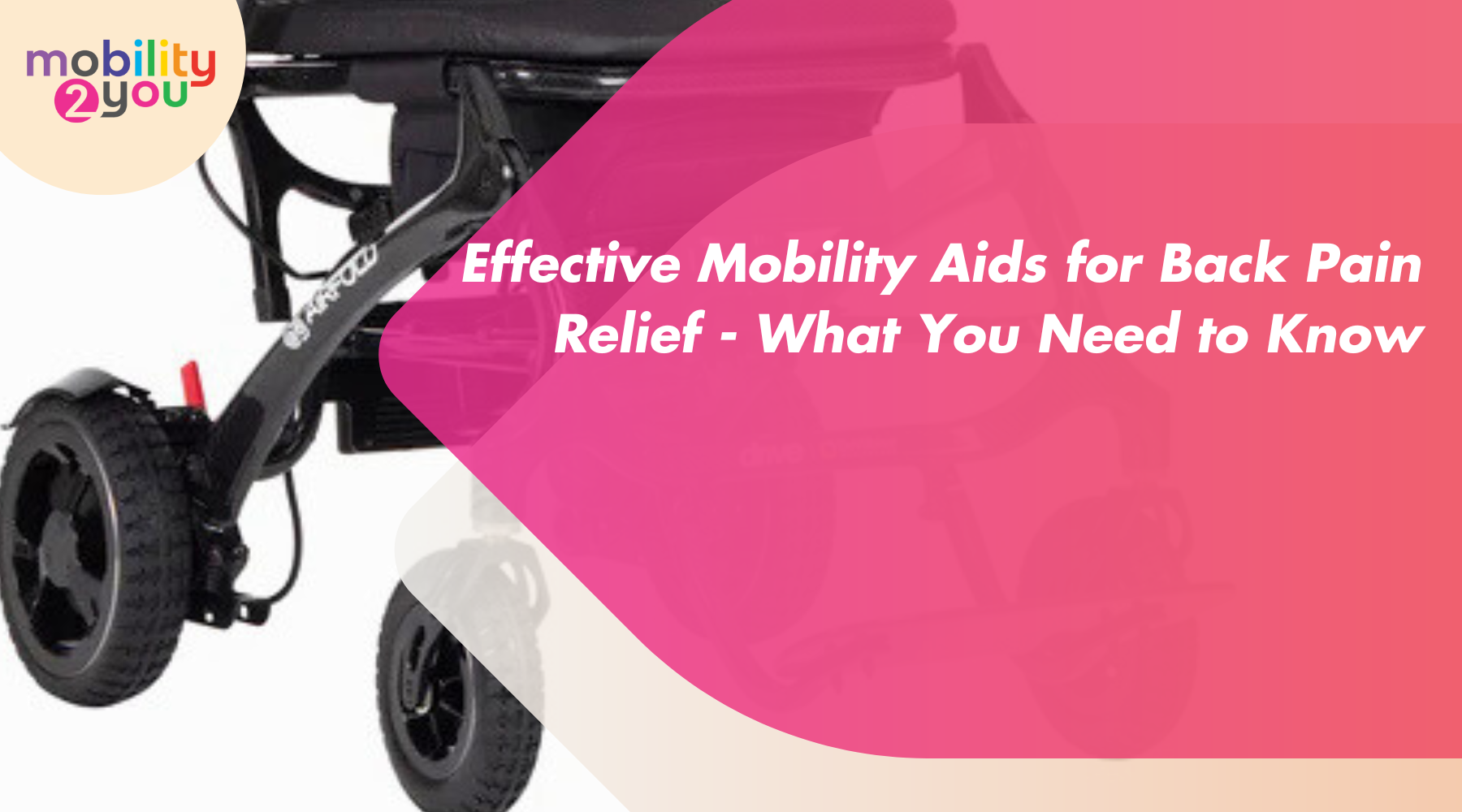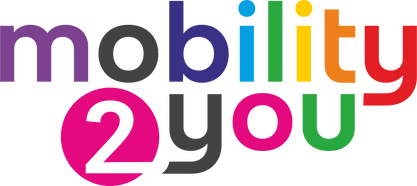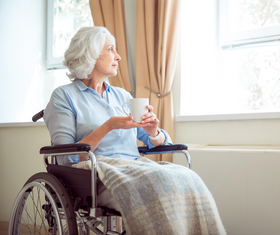
Effective Mobility Aids for Back Pain Relief - What You Need to Know
Back pain is one of the most common health complaints in the UK, affecting millions of people daily. Whether it stems from an injury, poor posture, or a medical condition such as arthritis or sciatica, managing chronic back pain can be a daunting task. Fortunately, discomfort can be greatly minimized with the correct resources and support networks. In this blog, we delve into how mobility aids for back pain can provide essential support and improve quality of life.
1. Ease Back Pain with Mobility Aids
Mobility aids for back pain are designed to reduce pressure on the spine, correct posture, and improve movement efficiency. For individuals who struggle with chronic or acute back issues, mobility aids can help minimise strain on the back muscles and joints during daily activities. These aids include walking sticks, back supports, rollators, and supportive seating devices—all tailored to offer varying levels of relief.
Using mobility aids helps redistribute weight and balance the body, preventing additional stress on painful areas. For example, a rollator with a seat allows users to take breaks and avoid prolonged standing, which often exacerbates back pain. The key is identifying the type of aid that matches your specific condition and lifestyle.
It's critical to identify the cause of your back pain. Lower back pain, mid-back pain, or upper spine discomfort all benefit from different kinds of support. Consulting with your GP or a physiotherapist can help clarify the root cause and the most suitable mobility aids for back pain in your case.
2. Choosing the Right Support
Selecting the appropriate mobility aids for back pain depends on the nature and severity of your symptoms. Consulting with a healthcare provider or occupational therapist can help you understand your individual needs.
Here are a few popular choices:
• Walking sticks and canes: Provide support while walking, helping reduce the strain on your lower back. Some models come with ergonomic handles and adjustable heights for added comfort.
• Rollators: Equipped with wheels and seats, ideal for those needing occasional rest. These allow users to walk more freely while having a seat available whenever fatigue or pain sets in.
• Lumbar cushions and backrests: Provide additional back support when sitting, particularly useful for office chairs or car seats.
• Posture supports and braces: Help correct spinal alignment and reduce tension in the back muscles. These are especially helpful for people with degenerative disc disease or scoliosis.
A large selection of back pain mobility aids from Mobility2You are made to be comfortable, long-lasting, and simple to use. Each product is selected with user well-being in mind, focusing on quality materials and ergonomic designs.
3. Benefits of Using Mobility Aids
The advantages of incorporating mobility aids into your daily routine are numerous. These tools not only support pain management but also encourage a more active, healthy lifestyle.
• Pain Reduction: Aids provide support and alignment, reducing muscle strain and alleviating pressure on painful joints and spinal discs.
• Enhanced Independence: With proper tools, users can perform tasks without relying on others, promoting a sense of freedom and self-sufficiency.
• Improved Posture: Consistent use of aids like lumbar cushions encourages better spinal alignment, which can lead to long-term relief from postural back pain.
• Confidence Boost: Knowing you have reliable support can reduce anxiety and encourage more movement, thereby improving mental health as well.
• Fall Prevention: Tools like walking frames improve balance, decreasing the risk of slips and falls—a major concern for elderly individuals with back pain.
Long-term use of mobility aids for back pain not only helps alleviate physical discomfort but can also have a positive impact on mental and emotional well-being.
4. Exploring Different Options
At Mobility 2You, we offer a curated selection of mobility aids tailored for back pain management. Each product is designed to address specific needs, allowing you to find the perfect fit for your lifestyle.
• Orthopaedic Chairs: These chairs are ergonomically shaped with built-in lumbar support, making them ideal for those who spend long hours sitting at a desk or in front of a television. They reduce the strain on the spine and support sitting up straight.
• Seat Cushions: Memory foam or gel cushions mould to the shape of your body and offer targeted relief for your lower back. Coccyx cushions are very beneficial for those who suffer from tailbone pain.
• Mobility Scooters: For individuals with severe pain, scooters provide a means of transportation without the need to walk long distances. This can be life-changing for people with limited stamina due to chronic pain.
• Bed Support Aids: These include adjustable backrests, leg wedges, and bed rails. They help users change positions and get in and out of bed without putting undue pressure on the spine.
• TENS Machines: These electrical devices stimulate the nerves to alleviate pain and improve function. TENS therapy can be used in conjunction with physical therapy and is often recommended by pain specialists.
Whether you need support at home, at work, or while travelling, there is a mobility aid designed to make your life easier.
5. Tips for Using Mobility Aids
Maximising the benefits of mobility aids for back pain involves more than just owning the right product. Here are some practical tips:
• Seek Professional Guidance: Always consult a physiotherapist or occupational therapist before using new aids to ensure suitability and proper use.
• Maintain Good Posture: Whether walking or sitting, strive for alignment to reduce back stress. Do not slouch or arch your back too much.
• Use Aids Consistently: Sporadic use may not provide lasting results. Regular use enhances effectiveness and creates long-term habits that support spinal health.
• Check Fit and Adjustment: Make sure aids are adjusted to your height and needs to avoid poor support, which could worsen pain or lead to secondary issues.
• Combine with Exercises: Mobility aids should complement a physical therapy or stretching routine for best outcomes. Their effects can be increased with regular core-strengthening and stretching workouts.
• Clean and Maintain Your Equipment: Regularly inspect your mobility aids for wear and tear. Replace worn-out parts and clean surfaces to maintain hygiene and functionality.
These strategies can amplify the positive impact of mobility aids on your back health.
6. Incorporating Aids into Daily Life
Mobility aids should be easy to include into your daily routine. Select assistive devices that complement your lifestyle and daily routine.
• At Work: Use ergonomic chairs or lumbar supports during desk work. Adjustable desks and monitor stands can help create a back-friendly workstation.
• At Home: Install grab bars in bathrooms and use reclining chairs with back support in living areas. Cushioned mats in the kitchen can reduce strain during cooking or standing tasks.
• While Travelling: Lightweight rollators or foldable walking aids are perfect for on-the-go support. Portable seat cushions can provide relief during long flights or car rides.
• During Exercise: Use support belts or braces to maintain alignment during low-impact workouts like walking or swimming.
• Sleeping: Memory foam mattresses and specially designed pillows can promote spinal alignment and reduce overnight discomfort.
These thoughtful adjustments can help maintain a pain-free routine and allow you to enjoy everyday activities with minimal disruption.
7. Improving Mobility and Comfort
Comfort and mobility go hand-in-hand when dealing with back pain. The goal is to create an environment that supports ease of movement while minimising discomfort.
Mobility aids allow users to move more freely without aggravating pain points. For example, using a lumbar roll in the car can improve posture during commutes. Similarly, a bed wedge can make sleeping more comfortable by reducing pressure on the spine.
At Mobility 2You, our products are selected to maximise comfort through ergonomic design and user-friendly features. Items like heated back pads, standing aids, and cushioned recliners provide not only relief but also relaxation.
Home modifications can also contribute significantly. Consider adjustable beds, raised toilet seats, and supportive kitchen stools to ease strain on the back during routine tasks. These small lifestyle changes, when combined with reliable mobility aids, can produce major improvements in your quality of life.
8. Finding Relief with Back Pain Aids
Back pain doesn’t have to dictate your life. People can feel much less discomfort, have more mobility, and become more independent when they use mobility aids appropriately.
Start by identifying the activities that cause the most strain. Then, select mobility aids for back pain that address those challenges. It may be a supportive seat, a walking frame, or a cushion designed for spinal alignment—each can offer meaningful relief.
Be open to combining multiple aids. Make use of a rollator for longer walks, a walking stick for excursions, and a lumbar support at your desk, for instance. Layering your support in this way ensures consistent relief across all aspects of your life.
Check out Mobility2You.com's extensive selection of back pain mobility aids. In order to get you moving comfortably once more, our team is here to assist you in identifying the best options. Because your comfort and independence matter.
Mobility aids are more than just tools—they are lifelines for many individuals coping with chronic back pain. With thoughtful selection and consistent use, these aids can dramatically enhance quality of life. Whether you're dealing with a recent injury or long-term condition, Mobility 2You offers trusted solutions that support your journey to better health.
From walking aids and seat cushions to posture supports and ergonomic furniture, the right equipment can make all the difference. Don't let suffering prevent you from leading the life you desire. Discover our range of mobility aids for back pain today and take the first step toward relief.
Don’t let back pain hold you back. Embrace mobility with confidence and comfort today.



